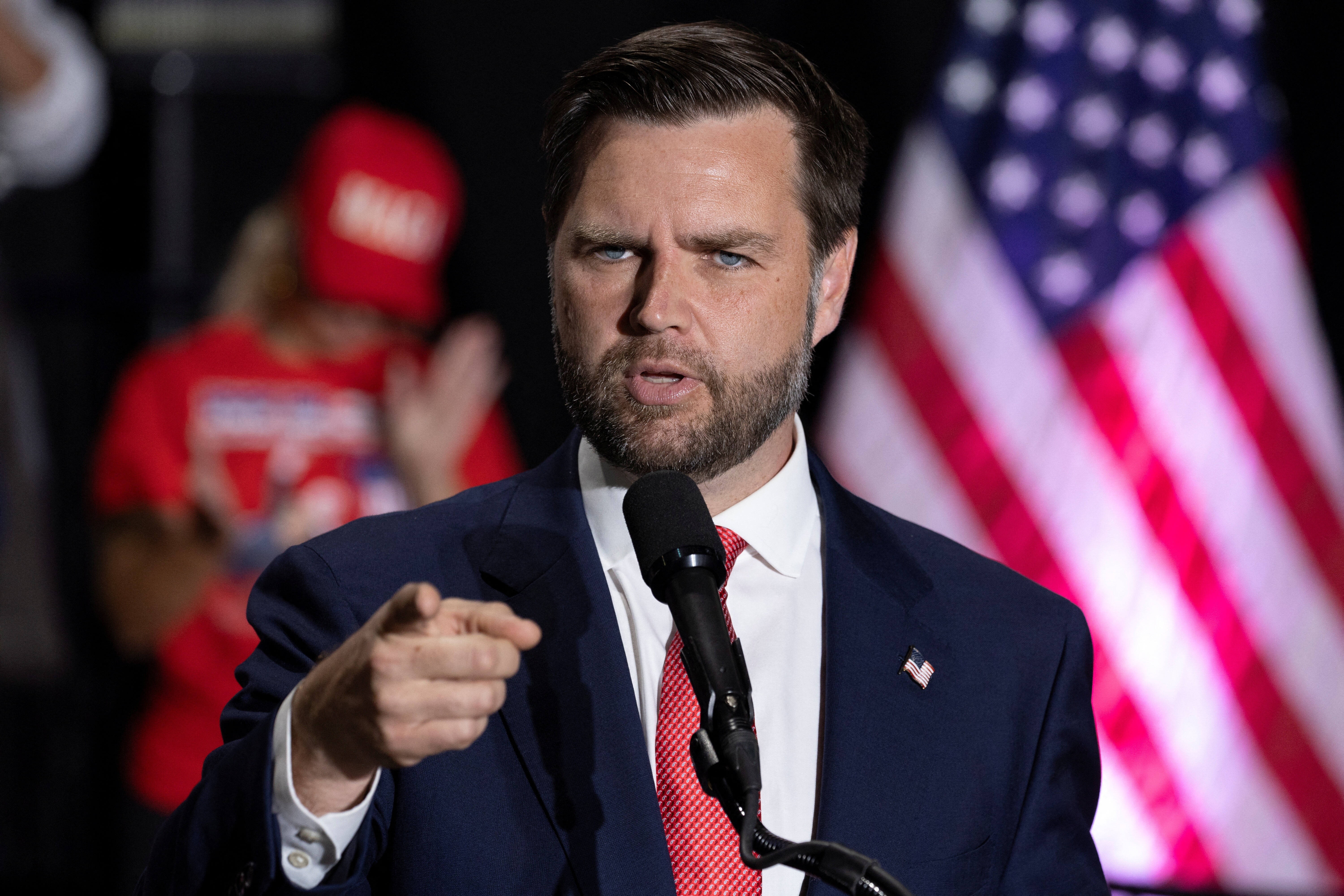3 min read
Vance backs Trump's support for presidential 'say' on Federal Reserve's interest rate policy
 Merit Street Media
|
Aug 12, 2024
Merit Street Media
|
Aug 12, 2024

Washington — JD Vance has endorsed former President Donald Trump's call for the White House to have “a say” over the Federal Reserve's interest rate policies — a view that runs counter to decades of economic research suggesting that politically independent central banks are essential to controlling inflation and maintaining confidence in the global financial system.
I'm a lucky man. Thanks Minnesota for a great rally! pic.twitter.com/MWrCp8HnmU
— JD Vance (@JDVance) July 28, 2024
"President Trump is saying I think something that’s really important and actually profound, which is that the political leadership of this country should have more say over the monetary policy of this country,” the Republican vice presidential nominee said in an interview over the weekend. “I agree with him."
Last week, during a news conference, Trump responded to a question about the Fed by saying, “I feel the president should have at least a say in there, yeah, I feel that strongly.”
Economists have long stressed that the Fed is legally independent from elected officials is vital since politicians would almost always prefer for the central bank to keep interest rates low to juice the economy — even at the risk of igniting inflation.
“The independence of the Fed is something that not just economists, or investors, but citizens should place a high value on,” said Carl Tannenbaum, chief economist at Northern Trust, a wealth management firm.
Tannenbaum pointed to the recent experience of Turkey, where the autocratic President Recep Tayyip Erdogan forced the nation’s central bank to cut rates in response to inflation, with “horrible results.” Inflation spiked above 65% before Erdogan appointed different leaders to the central bank, who have since raised its key rate to 50% — nearly ten times the Fed’s current rate of 5.3%.
By adjusting its short-term interest rate, the Fed influences borrowing costs for consumers and businesses, including for mortgages, auto loans and credit card borrowing. It can raise its rate, as it did aggressively in 2022 and 2023, to cool spending and slow inflation. The Fed also often cuts its rate to encourage borrowing, spending, and growth. At the outset of the pandemic, it cut its rate to near zero.
On Saturday, Vice President Kamala Harris said she couldn’t “disagree more strongly" with Trump's view.
“The Fed is an independent entity, and, as president, I would never interfere in the decisions that the Fed makes,” she said.
President Richard Nixon's pressure on Fed Chair Arthur Burns to keep rates low leading up to the 1972 presidential election has been widely blamed for accelerating rampant inflation that wasn't fully controlled until the early 1980s, under Chair Paul Volcker.
Tannenbaum warned of potentially serious consequences if the Trump-Vance proposal for the White House to have some role in Fed policymaking were to take effect.
“If it does carry through to proposed legislation ... that’s when I think you would begin to see the market reaction that would be very negative,” he said. “If we ignore the history around monetary policy independence, then we may be doomed to repeat it.”
Trump has a combative history with the Fed's current chair, Jerome Powell, whom Trump appointed in 2018. As Powell oversaw a series of modest interest rate hikes in 2018, Trump began attacking him, calling Powell “my biggest threat” that October after the stock market fell sharply.
In 2019, the Fed began to cut rates amid a slowdown in manufacturing and uncertainty over the impact of Trump's trade fight with China. In August that year, he asked on social media whether Powell was a greater enemy than China's president Xi Jinping. He later ridiculed Fed officials as “boneheads. ”
As COVID ravaged the economy in 2020, Trump attacked Powell for not cutting rates fast enough, and said he could fire Powell, though his legal power to do so is unclear.
“I used to have it out with him, I had it out with him a couple of times very strongly,” Trump said last week. "I fought him very hard. We get along fine.”
Historically, it has been common for many presidents, from Harry Truman through Ronald Reagan, to press Fed chairs to cut rates or to refrain from hiking them, though they typically did so in private meetings.
Starting with President Bill Clinton in 1993, however, for about a quarter-century until Trump, presidents took a hands-off approach, said Sarah Binder, a political scientist at George Washington University and author of a book on Fed independence.
“Presidents really restrained themselves,” she said. “They didn’t talk about monetary policy. They didn’t talk about interest rates. They were convinced that maybe if they just kept their mouth shut, the Fed would do the right thing.”
When Trump attacked Powell in 2018 and 2019, the Fed chair received public and private support from members of Congress, including Republicans. But that was partly because the economy was doing well, Binder noted.
When the economy struggles, she said, criticism of the Fed is often more widespread. Should Trump win re-election and the economy were to sour, it's hard to know whether members of Congress would defend Powell again.
“If the economy is much worse off, the question is, who comes to the Fed's defense?" Binder asked. “And I think that's really financial markets. They're really the ones that are going to react in real time to what Trump is threatening to do."
Copyright Associated Press

